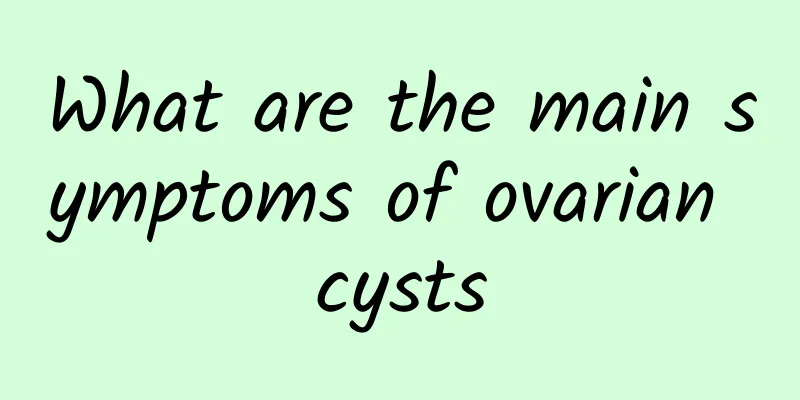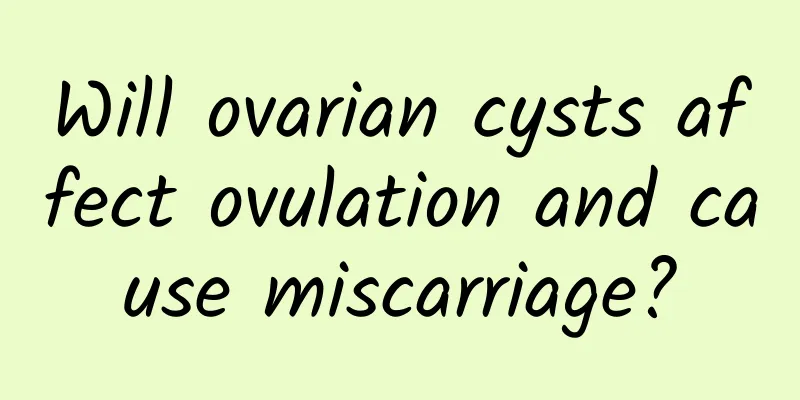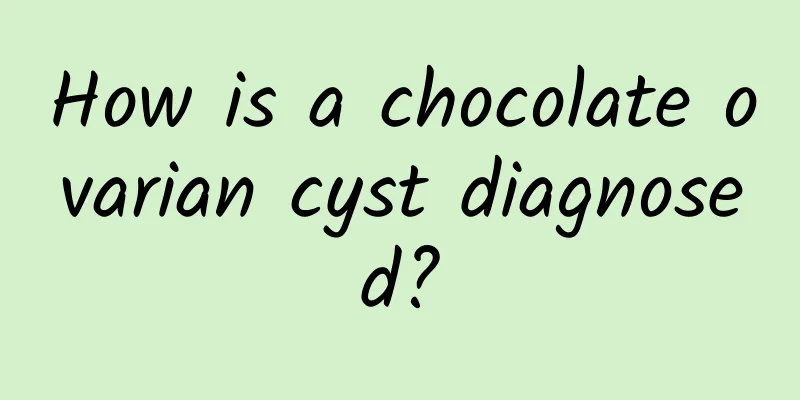Will an ovarian cyst shrink on its own? Will it get worse if left untreated?

|
Will an ovarian cyst get smaller on its own? Will it get worse if not treated? Most patients with ovarian cysts have no obvious symptoms and are only discovered during gynecological examinations. Occasionally, cysts rupture and cause bleeding and pain. Among them, follicular cysts are common ovarian cysts. Most of them can shrink or disappear on their own within two months without special treatment. Corpus luteum cysts are related to the continued existence of the corpus luteum after ovulation and bleeding and plasma exudation. During pregnancy, the corpus luteum can also enlarge to become a corpus luteum cyst. Corpus luteum cysts in non-pregnant women usually shrink or disappear within two months, and corpus luteum cysts in pregnancy usually disappear naturally after 3 months of pregnancy. After hydatidiform mole is expelled by uterine curettage or after treatment of choriocarcinoma, corpus luteum cysts can disappear on their own. As for ovarian cystic tumors, there are benign and malignant types. They cannot disappear naturally and all require surgical removal. Symptoms of worsening ovarian cysts include: 1. Abdominal distension Due to the rapid development of malignant tumors, patients will experience obvious abdominal distension in a short period of time, and examination is often accompanied by ascites. 2. Abdominal pain If a malignant ovarian cyst affects the surrounding nerves and absorbs nutrients from the surrounding organs and tissues, the patient will experience obvious lower abdominal pain, back pain or lower limb pain. Abdominal pain symptoms, especially right lower abdominal pain, in patients with malignant ovarian cysts need to be differentiated from diseases such as pelvic inflammation to avoid misdiagnosis and delay the best early treatment opportunity for the disease. 3. Cachexia The main symptom of patients with late-stage malignant ovarian cysts is cachexia. Gynecological examination can reveal scattered hard nodules in the posterior fornix in the vagina. The lumps mostly occur on one side, are generally fixed, solid or semi-solid, and have an uneven surface. |
<<: How to have a baby with irregular menstruation
>>: What are the sequelae of premature ovarian failure?
Recommend
What are the early symptoms of vaginitis?
Vaginitis brings a lot of unspeakable pain to our...
What supplements can my wife take for uterine fibroids? What should patients with uterine fibroids eat?
What supplements can my wife take for uterine fib...
Is pelvic peritonitis difficult to cure?
When it comes to pelvic peritonitis, I believe ma...
How to regulate menstruation
Missed periods are not uncommon among women, but ...
How can I get rid of the right ovarian cyst? What medicine should I take?
The treatment methods for eliminating right ovari...
Will irregular menstruation affect pregnancy?
Will irregular menstruation affect pregnancy? 1. ...
Can I get pregnant if I have cervical erosion of degree 2?
Among gynecological diseases, there are many very...
Eating too much sodium can cause your blood pressure to soar, and here are five major dangers! Nutritionist: Vegetables and whole grains also contain high sodium content
Excessive sodium intake in the diet is not only o...
Why can't you eat red beans for uterine fibroids? Why can't you eat red beans, black beans, and mung beans for uterine fibroids?
Why can't you eat red beans if you have uteri...
Can I wash my vulva for itching after pregnancy?
Can I use lotion if I suffer from vulvar itching ...
What are the possible symptoms of adenomyosis?
Some people don’t know much about adenomyosis. Th...
In summer, we should do a good job in preventing pelvic inflammatory disease
Hot and humid weather is a period when bacteria m...
The causes of different types of ovarian cysts are also different
Ovarian cyst is a common gynecological disease, w...
Do ovarian cysts require surgery?
Do ovarian cysts require surgery? Ovarian tumors ...
What are the main causes of cervicitis?
What are the main causes of cervicitis? I believe...









